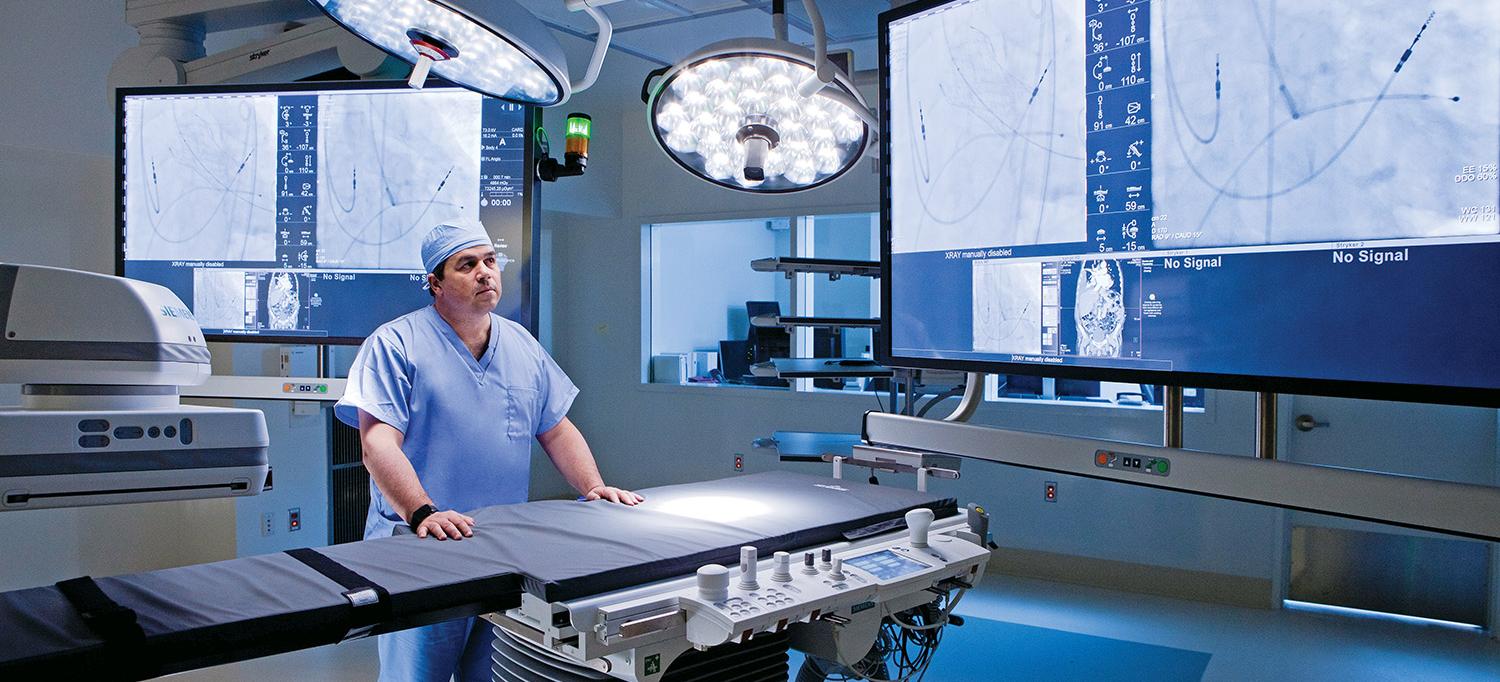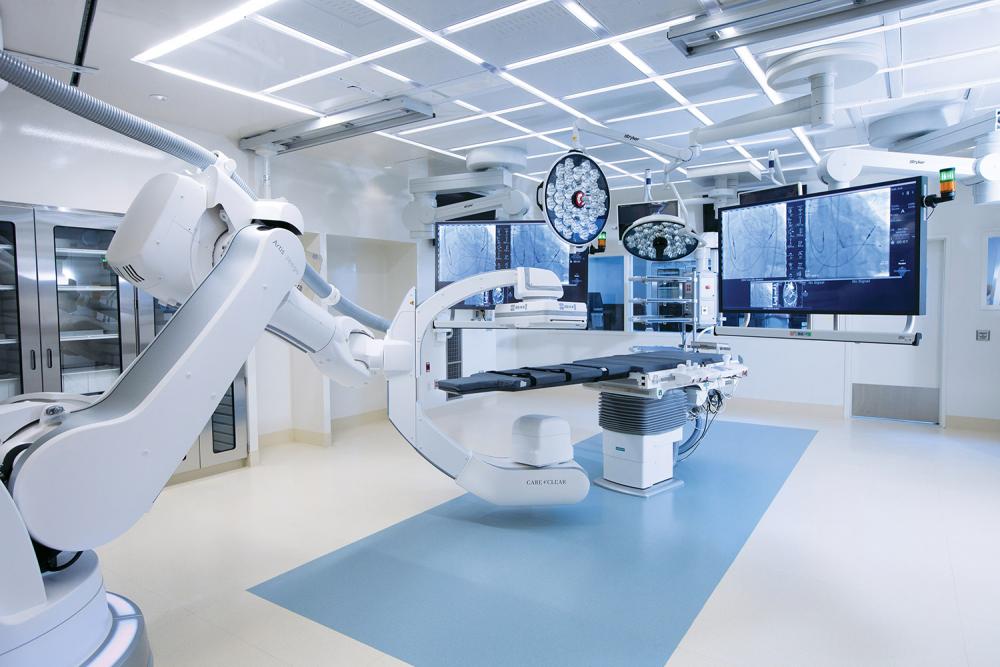
Dr. Mathew Williams in the new hybrid OR. Displayed on the screens are X-rays from a rare double heart-valve replacement.
Photo: John Abbott
A decade ago, most cardiac surgeons would have scoffed at the idea of repairing a heart valve through a tiny nick in the groin and then sending the patient home the next day without a single stitch. Today, that once-improbable procedure—known as transcatheter aortic valve replacement, or TAVR—is not only a reality, but an increasingly common alternative for patients too sick or frail for open heart surgery.
At NYU Langone, where the number of TAVR cases alone has jumped from 50 to over 350 cases in the past two years, the trend toward nonsurgical options for a growing list of heart, brain, and vascular conditions is evident in the construction of a second state-of-the-art “hybrid” operating room, opened in April. The facility is built exclusively for TAVR and other procedures that require sophisticated imaging tools that enable surgeons to peer inside the body and navigate through blood vessels—all without making incisions. Some of the procedures commonly performed in the hybrid ORs involve repairing a mitral valve to restore normal blood flow within the heart, repairing a weakened wall of the aorta or a blood vessel in the brain, and opening a narrowed artery to restore adequate blood supply to the brain. Together, the two ORs will accommodate more than 1,000 cases annually.
“Hybrid ORs have been a game changer,” explains Mathew Williams, MD, a pioneer in catheter-based heart valve repairs. “Without them, many of the most complex, minimally invasive cardiac, vascular, and neurovascular procedures would be difficult or even impossible.”
A hybrid OR combines a lead-lined catheterization lab—where radiological imaging techniques to visualize blood vessels are traditionally performed—with a conventional operating room equipped for open surgery. Such flexibility allows surgeons to more confidently treat exceedingly complex cases.
NYU Langone’s newest hybrid OR, located on the sixth floor of Tisch Hospital, features some of the fastest, most advanced imaging tools available, notes Michael Recht, MD, chair of the Department of Radiology. Its centerpiece is a state-of-the-art low-dose X-ray machine with a robotic camera that can rotate to any position around the patient, affording views from any angle. For patients, the result is speedier, gentler procedures that require less anesthesia and shorter hospital stays. In fact, patients who undergo TAVR procedures typically go home the next day.
In recent years, the demand for hybrid ORs has soared nationwide, fueled by the popularity of less invasive surgical techniques, the needs of an aging population with multiple chronic diseases, and the advances of ever more sophisticated imaging technology and surgical procedures. Aubrey Galloway, MD, chair of the Department of Cardiothoracic Surgery, notes that just seven years ago, all cardiac valve repairs and replacements, for instance, required a surgical approach. In the next two years, he predicts, as many as 40 percent of patients who require such procedures will be treated with a catheter-based technique.
To stay ahead of the curve, the new Helen L. and Martin S. Kimmel Pavilion, set to open in 2018, will be built with all the infrastructure needed to accommodate at least four new hybrid ORs. “Hybrid ORs are no longer revolutionary technology,” says Dr. Galloway, “but they facilitate revolutionary techniques.”
Dr. Williams, director of the Heart Valve Center at NYU Langone, has a unique perspective on hybrid ORs. He was the first surgeon in the US to be dual-trained in interventional cardiology, which relies heavily on catheterization labs, and cardiac surgery, which specializes in open surgery. “Simply put,” says Dr. Williams, “hybrid ORs combine the best of both worlds.”


